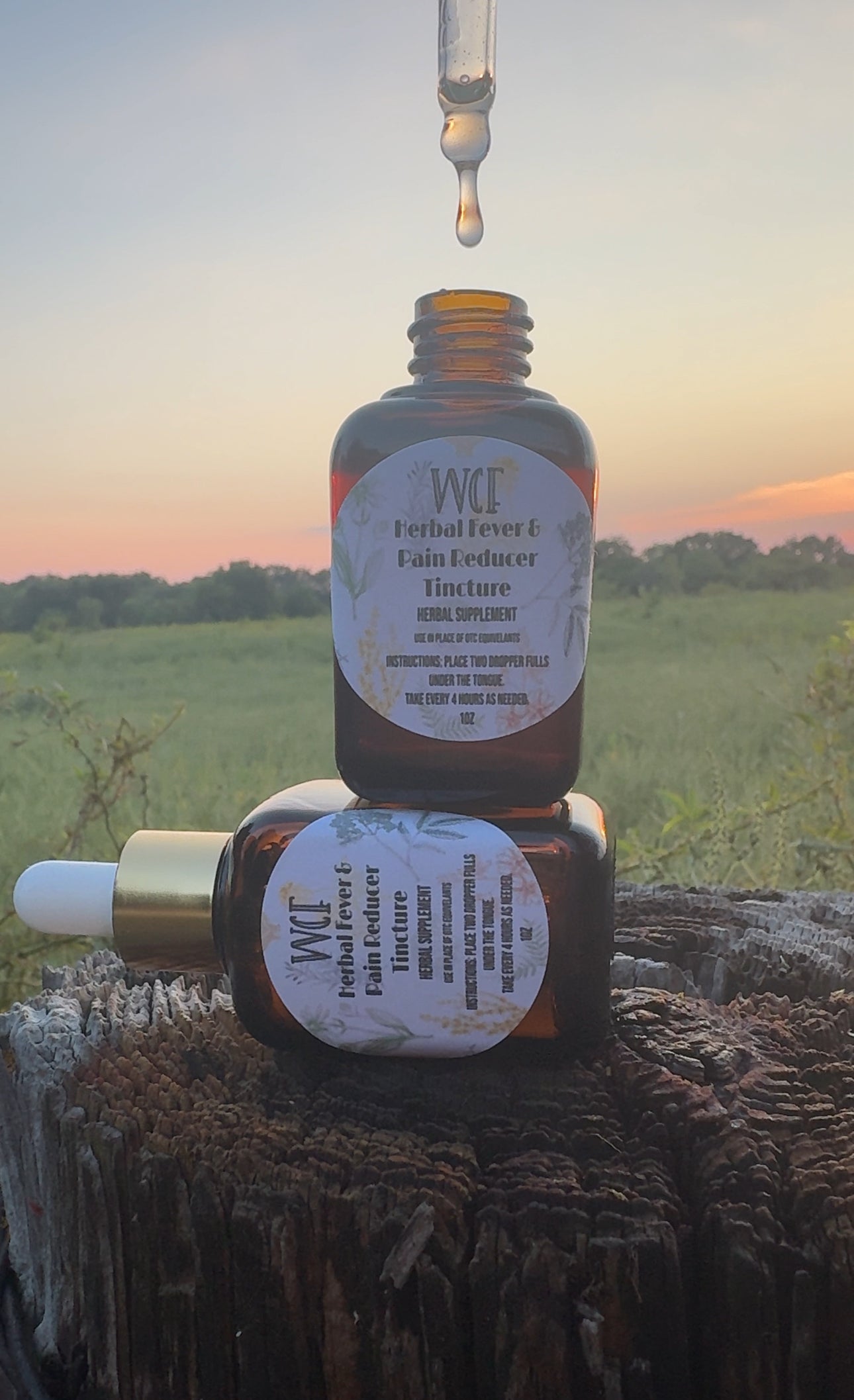WCFMarket
Herbal Fever & Pain Reducer Glycerite (1oz amber glass dropper)
Herbal Fever & Pain Reducer Glycerite (1oz amber glass dropper)
Couldn't load pickup availability
It’s pretty amazing to me that we are provided with everything we need at the right time in the season for stocking our apothecaries.
•
My mind is further blown that the plant is available at the right time in the season to be stored, used, fermented, infused, and prepared for when we need it most.
•
This is the season…right now until early fall…to finish gathering those late season harvests like goldenrod and jeweled…and pulling out those early spring harvests that are tied up and hanging from rafters, to get infused and fermented and ready for…you guessed it…sick season!
•
And if you’re mixing and fermenting and wild crafting right now, you’ll be right on time to have everything ready for when you need it!
•
This herbal Tylenol alternative recipe is always crafted at this time of year so I have it on hand when those fevers and flu symptoms strike us this winter. (Though we’re believing for total wellness and health!)
•
By swapping out Tylenol for a more natural alternative, you’re protecting your liver and your stomach amongst much more…and we’re here for it!
•
This recipe can be made in either tincture or glycerite.
•
For us, I always make this in glycerite form, because we give this to our children as well…though I must note tinctures are also safe for children of doses correctly and contain about as much alcohol as an OTC children’s cough syrup.
•
So you chose what’s best for you and your family and what’s on hand in your home!
•
To make this:
1) add equal amounts of willow bark, elderberry blossom, yarrow, and feverfew (and if you’ve been foraging along with me this season, you should have all these ready to go! *dry or wet herb for glycerites and tinctures) to your sterilized jar of choice, filling halfway with herbs.
2) fill and top the jar with vegetable glycerin or an alcohol of choice (often vodka or brandy is selected) and allow to infuse for 4-6 weeks, shaking every once in awhile.
3) once it’s finished, strain and transfer to amber glass and this will keep for 1-2 years (I switch mine out every year at this time of year)
Dosage: half a dropper at 6-12 drops for my children and one dropper at 20-30 drops for adults up to 3 times a day as needed
*note: always research and do what is right for you and your family and speak to your own practitioners before introducing any herbal remedies into your diet and lifestyle.
Elderflower: is extract of the flower is used to make medicine. Elderflower is used for swollen sinuses (sinusitis), colds, influenza (flu), swine flu, bronchitis, diabetes, and constipation. It is also used to increase urine production (as a diuretic), to increase sweating (as a diaphoretic), and to stop bleeding.
Willow bark: contains a chemical called salicin, which is similar to aspirin. It has pain and fever reducing effects in the body. People commonly use willow bark for back pain, osteoarthritis, fever, flu, muscle pain, and many other conditions
Feverfew: is promoted for fevers, headaches, and arthritis; topically (applied to the skin), it's promoted for toothache and as an antiseptic and insecticide. Feverfew has been called “medieval aspirin” or “aspirin of the 18th century.”
Yarrow: has many uses, but for this it’s great for fevers and colds: Yarrow tea can be used to soothe colds, fevers, and headaches. It’s also great for Inflammation: Yarrow can be used to treat inflammation in the intestinal and female reproductive tracts, and may help with menstrual cramps, muscle spasms, and PMS.
To harvest willow bark, choose young branches and cut off at a node to ensure the branch can regrow. Harvest two or three branches per Salix bush or tree to be sustainable. Then strip down to the inner bark layer. Consider using a potato peeler rather than a knife.
Black and white willow are most commonly used though most can be! (Salix alba and Salix nigra)



